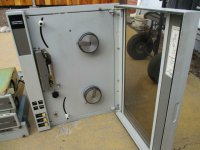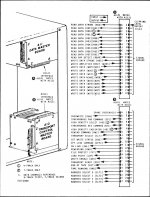There are some out there that already have a GPIB or a SCSI interface and so aren't that difficult to connect to, just a software issue from that point. But those decks are rare. I have seen a YouTube video featuring a GPIB and a SCSI unit, but until recently (Panhandle Bob has a GPIB unit I am negotiating for) hadn't found one in the used/vintage market. Most decks have a 'Pertec' interface. This was pretty much the standard of the day, but still required something between the computer and deck, like a formatter to convert the bits streaming to and from the tape into a package a computer could easily digest. The Pertec interface is usually 2 edge connectors, one with tape control and status lines, the other with read and write data lines. Sometimes the read and write each have their own connectors. I have one of those units with three connectors but can remove the add on board that breaks it out to three.

